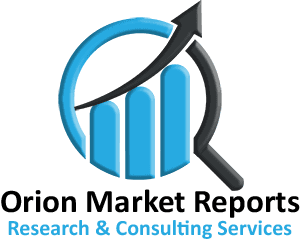Pulmonary Arterial Hypertension (PAH) Market Global Trends, Market Share, Industry Size, Growth, Opportunities and Market Forecast – 2021 to 2027
The Pulmonary Arterial Hypertension (PAH) Market is expected to gain market growth in the forecast period of 2021 to 2027. The market is growing with a CAGR of 8% in the forecast period of 2021 to 2027.
Pulmonary arterial hypertension (PAH) is a form of a condition known as pulmonary hypertension, which means high blood pressure in the lungs. PAH is characterized by increased pressure within the pulmonary artery due to structural changes within the vessel wall, aggregation of platelets, and changes in somatic function, resulting in increased pressure within the pulmonary artery, which is imposed on pumping blood into the lungs. Consumers’ daily changes in terms of lack of physical activity and greater consumption of alcohol, tobacco, and fast food products increase their chances of developing high blood pressure and high blood pressure. Elevated blood pressure causes several diseases, such as stroke and heart attack. Treatment of pulmonary arterial hypertension can be done with drugs such as endothelin receptor antagonists, prostacyclins and prostacyclin analogs, soluble guanylate cyclase stimulants, and phosphodiesterase type 5 inhibitors.
Market Segments
By Drug Type
- Endothelin Receptor Antagonists (ERAs)
- Prostacyclin and Prostacyclin Analogs
- sGC Stimulators
- PDE-5 Dipsticks
By Sales Channel
- Hospital Pharmacy
- Retail Pharmacy
- Online Pharmacy
Key Players
Key players in the PAH market include Johnson & Johnson Services, Inc. (Actelion Pharmaceuticals, Ltd.); Novartis International AG; Gilead Sciences, Inc.; United Therapeutics Corporation; GlaxoSmithKline plc (GSK); Pfizer, Inc.; Dong-A ST Co., Ltd.; Merck Sharp & Dohme Corp; Bayer HealthCare; and Arena Pharmaceuticals.
Scope of the Report
The research study analyzes the global Pulmonary Arterial Hypertension (PAH) industry from 360-degree analysis of the market thoroughly delivering insights into the market for better business decisions, considering multiple aspects some of which are listed below as:
Recent Developments
o Market Overview and growth analysis
o Import and Export Overview
o Volume Analysis
o Current Market Trends and Future Outlook
o Market Opportunistic and Attractive Investment Segment
Geographic Coverage
o North America Market Size and/or Volume
o Latin America Market Size and/or Volume
o Europe Market Size and/or Volume
o Asia-Pacific Market Size and/or Volume
o Rest of the world Market Size and/or Volume
Key Questions Answered by Pulmonary Arterial Hypertension (PAH) Market Report
1. What was the Pulmonary Arterial Hypertension (PAH) Market size in 2019 and 2020; what are the estimated growth trends and market forecast (2021-2027).
2. What will be the CAGR of the Pulmonary Arterial Hypertension (PAH) Market during the forecast period (2021-2027)?
3. Which segments (product type/applications/end-user) were most attractive for investments in 2021? How these segments are expected to grow during the forecast period (2021-2027).
4. Which manufacturer/vendor/players in the Pulmonary Arterial Hypertension (PAH) Market was the market leader in 2020?
5. Overview on the existing product portfolio, products in the pipeline, and strategic initiatives taken by key vendors in the market.
The report will be delivered within 48-72 hours after payment confirmation
